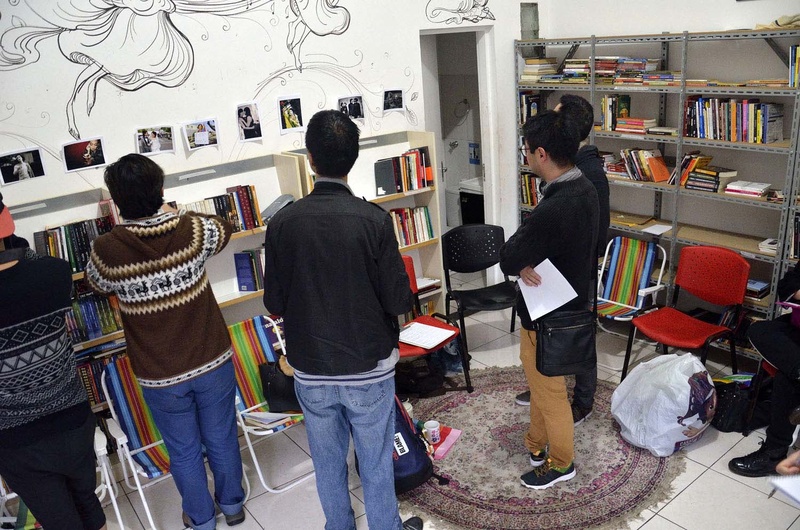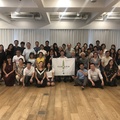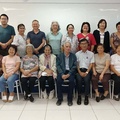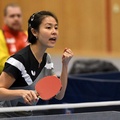References
Eastern ethnicities have little visibility in the Brazilian mainstream media. Although the quantitative proportion is small, in cultural and economic terms, the participation of Eastern groups is expressive. Even so, the visibility as part of Brazilian society is very small. In relation to homosexuals, there is a search for the gender related reference in addition to the ethnic.
“I remember that in a soap opera there was a gay couple and it was all very veiled. I think it was Sandrinho, but I do not remember much as he was [Note: Sandrinho is the character played by the actor André Gonçalves in The Next Victim, broadcasted in 1995]. Whenever I saw some mention in TV programs or some discussion in the media about homosexuality, I stopped to listen,” recalls Aryel.
Animes are also mentioned as sources of references; these are more subtle. “There were several characters with sexuality often non-heterosexual or with behaviors well out of standard. I remember Saint Seiya, in which everyone thought Shun was gay; many gave a bad connotation to that. In Sailor Moon, there were the Sailors who were men, and when they transformed, they became women. In Card Captor Sakura, there were Toya and Yukito, who were very dear to the public. In cartoons, everything was treated very naturally, without deep questioning. I think this has helped me look at these issues in a lighter way. In addition, I was discovering that there was a manga style with gay stories, which are yaoi,” continues Aryel.
“I was a naive child for a long time. Sexuality was not something that was going on in my head. So much so that I watched Card Captor Sakura and never noticed several things, several 'homoaffective' moments that I only became aware of a few years ago. Saint Seiya and Yu Yu Hakusho, among other animes, are my references, I believe not in a sexual way, but more related to gender matters,” recalls Jan.
In Brazilian TV, in the 80's and 90's, homosexual man was usually represented in comic sketches, with exaggerated gestures and speech, extravagant clothes and fussy behavior.
“I do not recall any positive reference in childhood. I remember personalities like Clodovil, Vera Verão and others, who were totally caricatured and definitely did not represent me. That was until I was a teenager, when I started watching American series like Dawson's Creek and Will & Grace, in which characters were closer to my reality,” says Flavio.
Kiyomi's experience was similar. “The references I had were bad, very bad. Until an English teacher, when I was in fifth grade, read a text about the US LGBT parade. This teacher was incredible, intelligent, black. She said that the Gay Parade was a march of people, executives, artists, workers who fought against injustice and walked together for a cause in common. She explained that 'gay' means 'happy' and that being gay does not mean trying to be of the other sex. At that time I was a child, I had no sexuality yet. It really shock my world and made me see that there was nothing wrong with being gay, that they were people who wanted to be treated equally,” she recalls.
There are some signs of change. “[Nowadays] I feel more represented definitely. Today, gay is not just the effeminate gay or the transvestite. There is greater representation of non-heterosexual diversity. However, there is still a need for more discussion and wider presence of more diverse figures, especially in the more targeted programs for the large population,” Flavio says.
“I think a lot has changed, but the stereotypes continue,” Kiyomi ponders. “The gay man, according to the stereotype, is a fashion expert who goes out to shop with his female friends; and the gay woman is a short-haired, malevolent figure who talks about woman with straight male friends, or who abhors men or the lesbian fetish as shown in many adult movies. And that's not quite the way it is,” she says.
Social networks
Groups in social networks contribute to the search for information and enlightenment for the Nikkei and Eastern homosexuals in general. This approach is fundamental to contribute to the matter of identification.
The Asiáticos pela Diversidade (Asians for Diversity) page, for example, currently has more than 6,000 Facebook followers, and a closed study group with about 450 members. The page was created in 2015 and, in the concept of “Asians”, includes nationals and descendants from the Middle East to Southeast Asia. “The main objective is to provide visibility to the Asian LGBT+ community living in Brazil and around the world through sharing news, comic content and shareable testimonies; to promote a safe space so that experiences can be shared, doubts can be discussed and possibly clarified, fears can be expressed, and finally problems can be developed in a pedagogical and sensitive way,” explains Rodrygo Tanaka, one of the administrators of the page. The group also organizes events such as debates, workshops and tours.
Aryel comments on the importance of these groups in social networks. “Being part of one Facebook group and then meeting people in person was a great feeling. It was very important when I could meet other people, especially the descendants of Japanese. They seemed to understand better certain situations that I lived. It was very important for building my identity as gay and as Asian.”
Aryel's opinion expresses some of the conflicts a young man may face. “I felt so lonely because I did not know anyone like me. It was already difficult to find gay men, finding a Nikkei gay seemed even rarer. I felt like I was the only Nikkei gay that existed. When there are no external references, the person eventually isolates itself and feels very lonely. I remember thinking about many things and suffering very quietly, because I had no one to share and I did not have anyone to understand me.”
“Thanks to Facebook, I met people that I would never have met in other circumstances. I think it is important to have [the groups] because we share the same problems, we hear the same comments and have the same doubts. Individuality is important, but the collective has strength. In times like this, it's good to feel understood,” says Kiyomi.
As previously mentioned, even among homosexuals, there is some stigma towards Orientals. “There is a lack of intersectionality and empathy for various experiences within the LGBT+ community. LGBT+ militancy is still very white, so even though they are minorities, they are not free from reproducing racism and xenophobia in society,” says Rodrygo.
“One of the things I learned during my life is that the best way to understand a situation is to learn about it. Generally, in the case of homosexuals, we see many sad cases but also about overcoming. I can say that I am a very lucky person. To this day, few were the times when I have suffered from prejudice due to my sexual orientation. Even within the Nikkei community, which is usually more rigid, I never suffered any direct aggression. Looking for information on the subject helped me a lot during my self-acceptance process. I believe that, in general, self-acceptance is the most difficult phase for those who assume homosexuality. It's a lot easier to get out of the closet now than it was five years ago. Information, especially through social networks, has greatly helped LGBTs gain visibility,” explains Ricardo.
© 2017 Henrique Minatogawa






